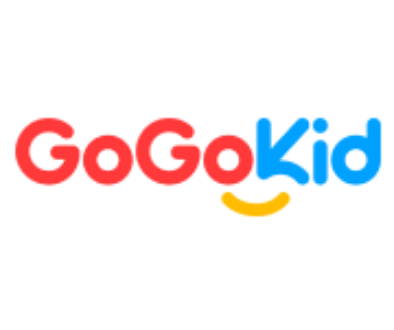How To Start A Blog In 7 Steps
If you’re looking to get into the world of blogging, then this is for you. I’m going to give you an overview of how to start a blog in 7 steps. Blogging is a great way to connect with people, express yourself, and even make money. Getting started might seem overwhelming, but with an organized plan you’ll be ready in no time. From choosing a platform and topic to setting up hosting and creating content, each step can be completed quickly with minimal effort. By taking these simple measures today, your brand new blog could be live within minutes!
Benefits of Blogging
Blogging can be awesome when done right. Some of the upsides of blogging include:
- Greater visibility: People will find you easier if you post content often. Plus, they’re more likely to spread it around if they enjoy it.
- Branding: Writing about things you’re passionate about or highly knowledgeable about can make you a specialist in your niche and help you reach out to those who share them.
- Connections: You can chat with people who could turn into customers or followers by leaving comments on topics related to your area.
- Income: You can make money with a blog – advertise products, suggest affiliate products, or promote services. Just manage it properly and you’ll have a steady revenue stream.
Steps To Getting Started with Blogging
So now let’s get into the basics of what you need to get started with blogging.
1. Identify Your Niche
When starting a blog, it is important to identify your niche. This will help you focus on topics that are relevant to your readers and create content that resonates with them. Consider what topics you are most passionate about and have extensive knowledge in. This will make creating content easier. Think of the type of audience you want to reach with your blog and consider how you can best serve them.
2. Choose a Hosting Platform for Your Blog
Choosing the right platform for your blog is essential. It determines where all of your files will be stored online and how quickly people can access them when they visit the website.WordPress, Blogger, Tumblr, and Squarespace are some popular options. These platforms allow for easy customization so that you can create a unique look for your website without needing any coding experience. Choose a host with SSL encryption, quality customer service, and unlimited resource storage. Hostinger, one of the top hosting sites, is an inexpensive and quality option.
No matter your budget or experience, you can find a suitable platform! Do some research before deciding which one is right for you based on factors such as price, storage space offered, etc.
3. Select A Domain Name
When choosing a domain for your site, think short, catchy, and memorable. Use keywords when possible. Domains ending in .com are usually preferred over .net or .org. You can purchase a domain for cheap at Namecheap.
4. Design Your Blog
Make it visually appealing! Once you have the technical side of your blog sorted, start to think about its design. Your design should show the blog’s purpose and personality. Whether you’re blogging to help people learn more about a topic or to make money, having a consistent style makes it easier for readers to explore the site.
Pick a theme that fits the content and purpose. WordPress has many options from developers and experts. Use one of these to build the look and feel of your site without starting from scratch. You can choose from pre-made themes or customize one yourself using HTML/CSS code if desired. After selecting the perfect theme, add features such as contact forms, social media buttons, search bars, etc., which will make navigating through the site easier for visitors. Additionally, you can add widgets to your blog page for displaying content from other websites such as Instagram or Facebook.
Use colors, fonts, and images that match the blog’s theme. Layout, colors, and fonts should be consistent across the website. This allows readers to spot what they have seen before and helps with navigation. It may also increase conversions.
Consider plug-ins to improve functionality, performance, and security. Code snippets and visual widgets make content easier to read. This can help keep readers on the page longer and make it more visible in search engine rankings. This can also lead to more views and more opportunities to make money.
Finally, make sure to optimize the loading speed of your website by compressing images and using caching plugins. This will ensure that visitors have a smooth experience when browsing through your blog.
5. Create A Content Strategy For Your Blog
Creating a content strategy prior to writing any posts ensures consistency throughout all posts published on the blog while also helping attract new readers over time due to its relevancy towards certain topics discussed within each post written afterward; this includes things like setting up editorial calendars outlining specific dates when new posts should go live or researching keywords related to particular niches that could potentially draw more attention towards your posts once published online later down the line.
6. Write Engaging Content
Content is key for your blog. Videos, photos, and writings are all part of the content. Before you begin, think of topics that your readers will find interesting and use language they can understand. Make a list of topics and research them. Use reliable sources like Google Scholar and NASA Technical Reports for more complex topics. This will help you express concepts in a way that readers can understand.
7. Write And Publish Your First Post
After creating a strategy, it’s time to start writing and publishing. Start by brainstorming ideas around certain topics related to your niche followed by actually writing out each post. Take into account things like formatting and structure. Add images, videos, and links wherever necessary. Then, publish each post onto respective websites making sure everything looks good before hitting the ‘publish’ button. Engage readers by asking questions and giving your opinion. This encourages readership and thought-provoking discussions. Once your blog post is published you can sit back and watch readers roll after seeing your first post live online!
If there are multiple authors, set guidelines for deadlines and meetings. This way, everyone can stay up-to-date on progress and feedback on each other’s posts.
Promoting Your Blog On Social Media And Generating Traffic
Once the post goes live, you can promote and share it on social media channels. If you have channels on major platforms like Facebook, Twitter, Instagram, Pinterest, and LinkedIn use them to get maximum exposure for your blog post. Utilize these networks to drive traffic back to your website by linking directly from each post or creating targeted ad campaigns. Additionally, you can use SEO tactics such as keyword research & link building in order to improve search engine rankings for specific posts and draw more organic web traffic over time too! Finally don’t forget about email marketing – create an email list with contacts related to a said niche then send out regular newsletters informing them whenever new posts go live online; this helps keep readers engaged & interested while also helping spread the word about newly published content around respective communities at the same time!
Promoting your blog on social media is key to generating traffic to it! Create accounts on popular social media sites such as Facebook, Twitter, and Instagram; these are great platforms for engaging with potential readers who may be interested in what you have to say about certain topics related to your niche. Post regularly on these platforms using hashtags related to those topics. That will help you get more visibility among users who may not already follow you. If they see something interesting enough within their feed they just might become readers of your blog! Additionally, use other methods such as SEO optimization techniques or paid advertising campaigns if desired in order to increase traffic even further!
Monetizing Your Blog
Once you’re a blogger, start thinking of ways to make money from it. You can sell digital products, such as eBooks and online courses. Or get sponsorship from brands and companies.
Think about what products and services you want to offer. There are ways to make money from your blog, like affiliate marketing or ads. Be sure to follow ethical practices when setting up ads.
Other income sources include sponsored posts, banner ads, and coaching services. Research laws around collecting payments. Make sure both parties know what commitments they’re making. And pick the right monetization strategy for the content you post. This way, visitors know why their browsing experience is interrupted.
Final Thoughts
Starting a blog is an incredibly rewarding endeavor. It requires hard work and dedication to build an audience that will appreciate the content you create. Following these steps can help you reach out more effectively to an audience who is interested in what your blog has to offer. With time and effort invested into this project, you can make your dreams come true by bringing value not only to yourself but also to everyone else involved along the way!





How to Monetize Your Blog with Affiliate Marketing - Curls Trip
March 5, 2023 @ 12:18 am
[…] you don’t have a blog but are interested in starting one, check out my post here to learn how to get started […]